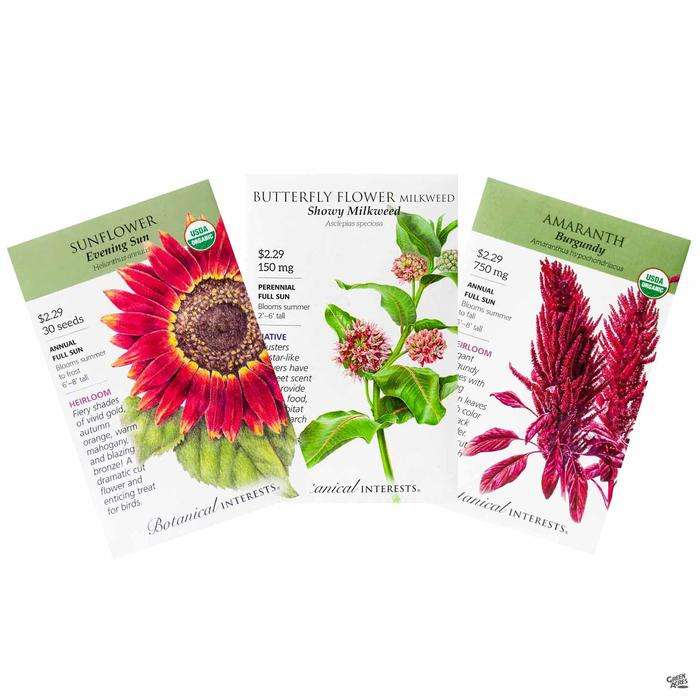
Gardening Terms to Decode Your Seed Packets

Seed Packet Lingo
Understanding the terminology on seed packets goes a long way to choosing the right seeds for your garden. Here's a list of some of the most common terms and their definitions.
Annual
Varieties that complete their life cycle in one year or less, requiring re-planting each year.
Determinate
Determinate
Determinate varieties produce the vast majority of their fruit in a short time span. These are ideal for food preserving.
Direct Sow
Direct Sow
These seeds are only planted directly into the prepared garden bed. Direct-sow seeds do not tolerate transplanting.
Genetically Modified Organism (GMO)
Genetically Modified Organism (GMO)
These seeds or plants are genetically engineered. All GMO seeds are only available to farmers now, and not to home gardeners.
Heirloom
Generally, heirloom varieties are proven to be at least 50 years old. They are open-pollinated, and the saved seeds will “breed true.”
Hybrid, also known as F1, F2 or even F3 Hybrids
Hybrids are a cross between two plants to breed desirable characteristics, such as disease resistance, higher yields, or growth habit. Seeds from hybrid plants will not “breed true” and are not suitable for saving. Hybrids are not GMOs.
Indeterminate
Indeterminate varieties produce over a long time period, providing yields for months.
Open-pollinated
Open-pollinated
Seeds saved from these varieties will “breed true”, growing into nearly identical plants as the plant they were harvested from.
Organic
Organic
These plants or seeds are grown under strict USDA guidelines for soil quality, and the use of pesticides, herbicides and fertilizers.
Perennial
Perennial
Varieties that live for more than two years.
Thinning
When more than one seed is planted (either for transplant or direct sow), more than one seed may sprout. To maintain proper distance between plants, extra sprouts are removed by thinning.
USDA Hardiness Zones
USDA Hardiness Zones
A guide for gardeners that defines 13 growing zones that takes into account how cold an area is. Each zone is 10℉ different from the next zone, and each zone is further divided by another 5℉ into (a) and (b). The USDA zone system is not the same as the Sunset zones system.
Find your USDA zone here: California Interactive 2012 USDA Plant Hardiness Zone Map
Find your USDA zone here: California Interactive 2012 USDA Plant Hardiness Zone Map
